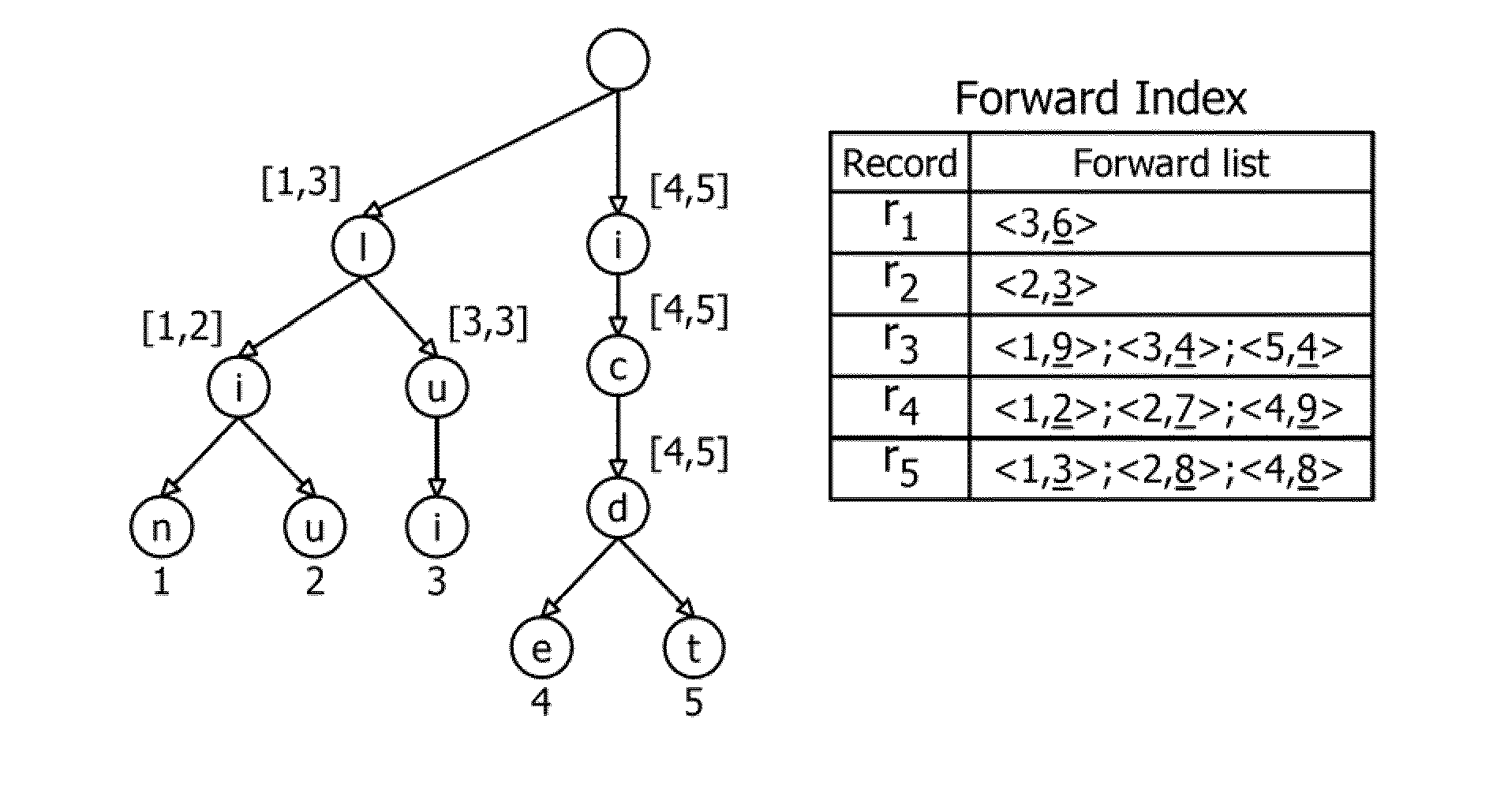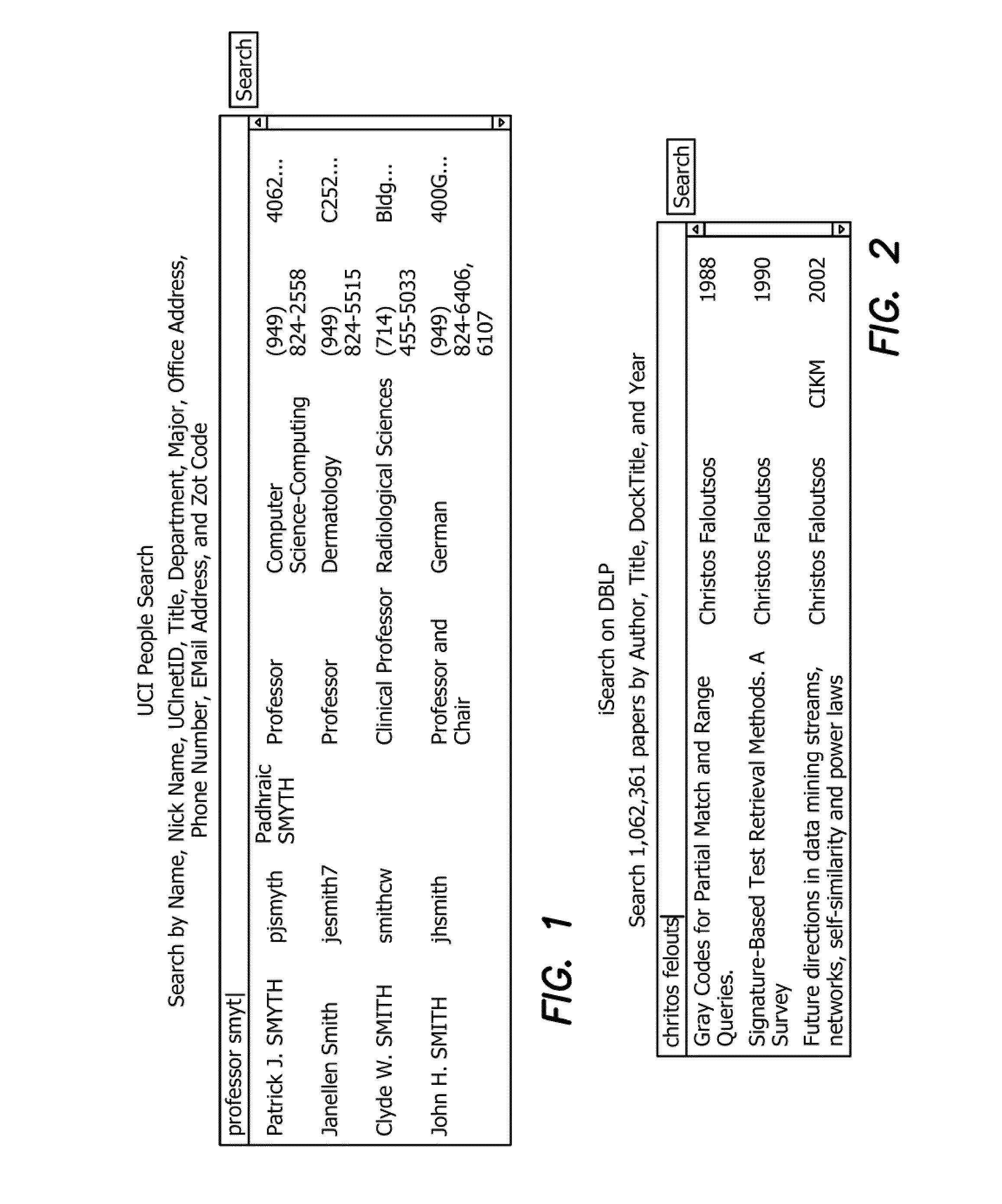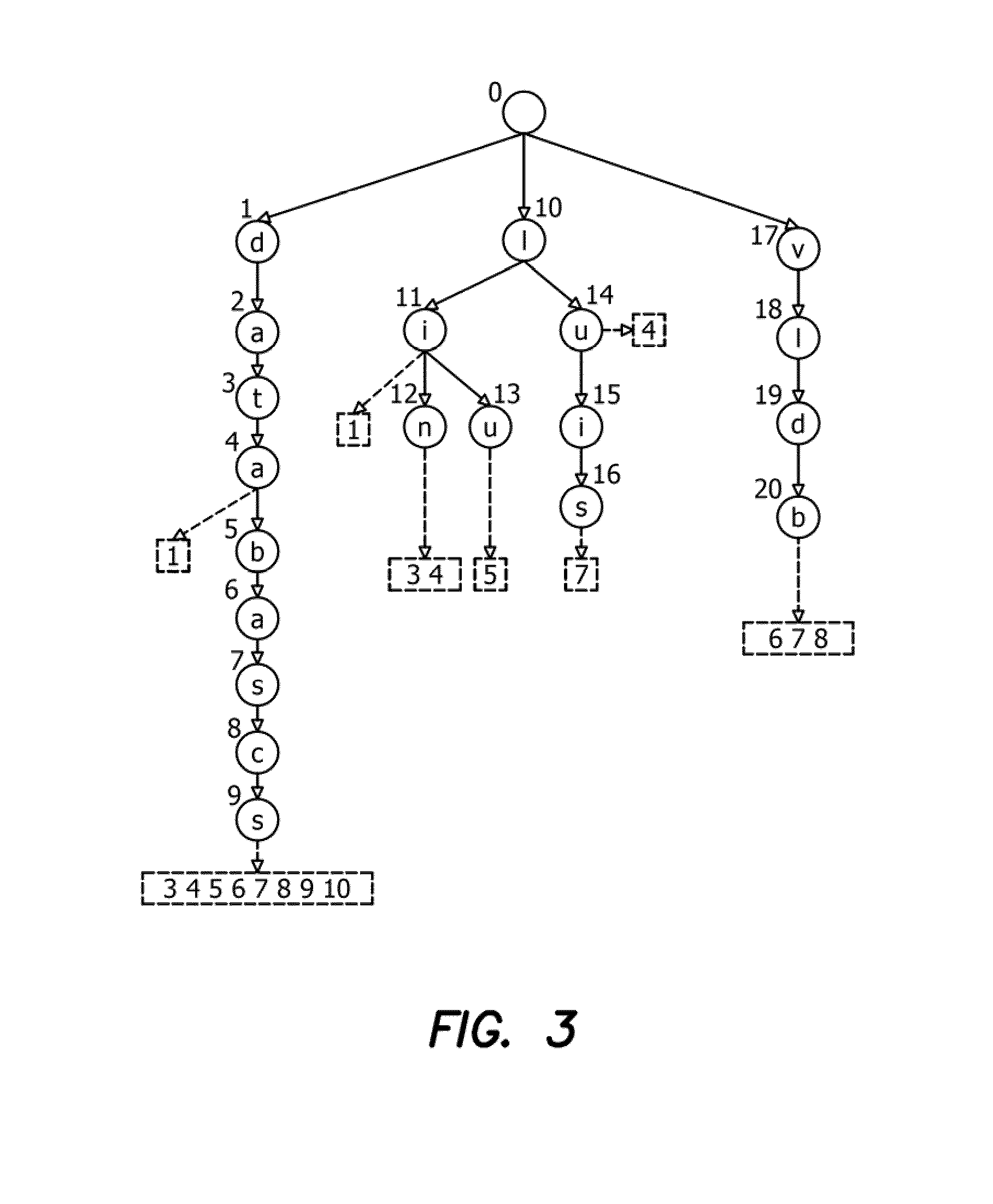Method for efficiently supporting interactive, fuzzy search on structured data
a structured data and search technology, applied in the field of interactive fuzzylogic searches of string databases, can solve the problems of large data framework and the inability of most existing algorithms to support interactive fuzzy search
- Summary
- Abstract
- Description
- Claims
- Application Information
AI Technical Summary
Benefits of technology
Problems solved by technology
Method used
Image
Examples
example 2
[0203]Assume a user types in a query “databases vldb luis” letter by letter. We use Table II to illustrate how our method works. As the user types in the keyword “databases”, for each keystroke, we incrementally answer the query as discussed before. When the user types in a space, we assume that the user has completely typed in the keyword “databases”. When the user types in “v”, we find the trie node 17. We identify the predicted word “vldb” and the predicted records 6, 7, and 8. We compute the intersection of the predicted records of “databases” and those of “v”, and get the predicted records of the current query (records 6, 7, and 8). Similarly, we can incrementally answer the query “databases vldb”. When the user types in another space, we assume that “vldb” has been typed in completely. When the user types in “lu”, there are two predicted words (“lu” and “luis”). We first compute the union of the record lists of the two predicted words, and get an ordered predicted-record list ...
example 3
[0234]Assume a user types in a query “nlis” letter by letter. Suppose the edit-distance threshold δ is 2. FIG. 4 illustrates how our method works to process the prefix queries invoked by keystrokes. Table III shows the details of how to compute the active-node sets incrementally. Firstly, we initialize φε={[0,0], [10,1], [11,2], [14,2]} (FIG. 4a and Table III(a)). When the user types in the first character “n”, for the string s=“n”, we compute its active-node set φs based on φεas follows. For [0; 0]∈φε, we put [0; 1] into φs, since we can delete the letter “n”. For node 10, which is a child of node 0 with a letter “l”, we put [10; 1] into φs, as we can substitute “l” for “n”. There are no match and insertion operations as node 1 has no child with label “n”. In this way, we get φs (FIG. 4b and Table III(b)). Similarly, we can answer the prefix queries of “nlis”.
[0235]For each active node, we predict the words corresponding to its leaf descendants. Consider the active-node set for the...
PUM
 Login to View More
Login to View More Abstract
Description
Claims
Application Information
 Login to View More
Login to View More - R&D
- Intellectual Property
- Life Sciences
- Materials
- Tech Scout
- Unparalleled Data Quality
- Higher Quality Content
- 60% Fewer Hallucinations
Browse by: Latest US Patents, China's latest patents, Technical Efficacy Thesaurus, Application Domain, Technology Topic, Popular Technical Reports.
© 2025 PatSnap. All rights reserved.Legal|Privacy policy|Modern Slavery Act Transparency Statement|Sitemap|About US| Contact US: help@patsnap.com



